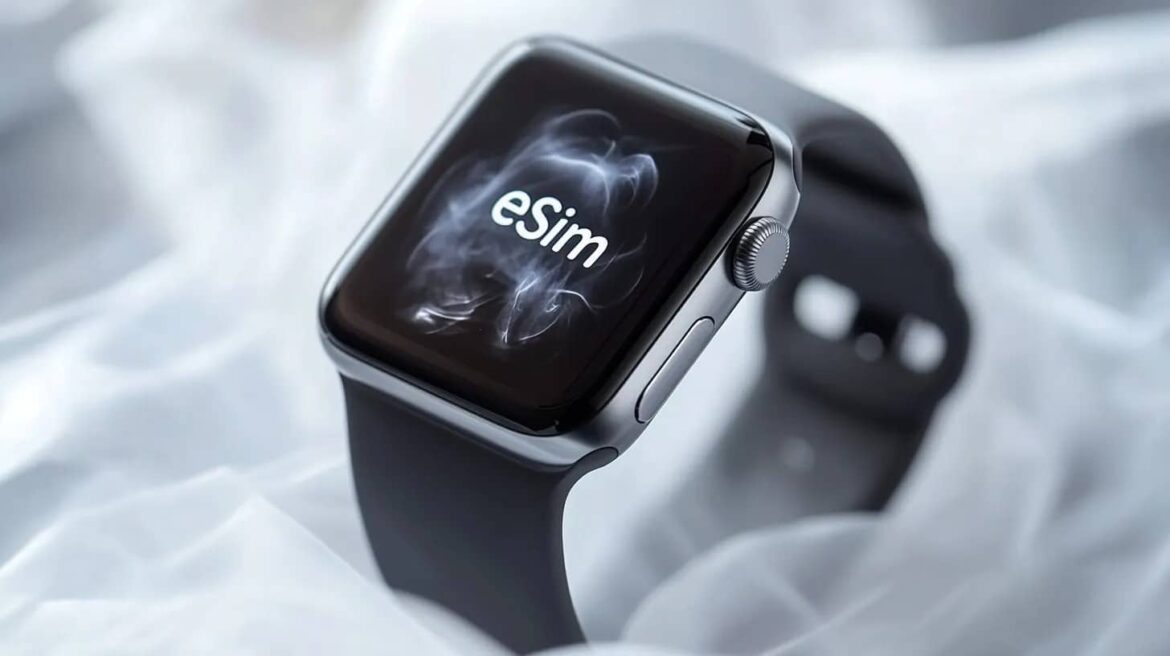eSIM technology offers flexible options for your Apple Watch, especially when used with O₂. This guide explains the technology behind it, how to get the most out of it, and the advantages and disadvantages.
Understanding the advantages and challenges of the O₂ Apple Watch eSIM
The O₂ Apple Watch eSIM offers numerous advantages, but there are also some limitations and challenges that should be taken into account.
- One outstanding advantage is that you are not tied to your iPhone. This applies to models with “GPS + Cellular” (i.e., eSIM support). This allows you to make calls, stream, and send messages with your watch, even when your smartphone is at home.
- The flexibility to switch between different networks without physical SIM cards is particularly valuable for business travelers or people who are frequently on the go.
- One potential disadvantage is that eSIM is not yet widely available in all markets. Compatibility issues may arise in some countries if local networks do not support the technology.
- The battery life of the Apple Watch may be reduced with intensive use of the mobile functions. Users should therefore adjust the relevant settings to save energy, for example by deactivating mobile communications when not needed.
eSIM technology explained: What’s behind the O₂ Apple Watch eSIM?
eSIM technology is at the heart of modern connectivity. It offers many advantages, especially for people who use smartwatches such as the Apple Watch.
- The eSIM is a built-in chip that stores an electronic SIM profile. It cannot be physically removed and makes it much easier to switch between mobile providers.
- For the Apple Watch, this means seamless integration into the existing mobile network. Users can use their watch independently of their iPhone to make calls or send messages – ideal for running or people who want to leave their phone at home. It can be used without an iPhone anywhere there is mobile coverage.
- The eSIM is activated digitally via the Apple Watch menu or the accompanying app on your iPhone. The process is simple and guided by clear instructions that ensure the connection is set up quickly.
- A key advantage of eSIM is the ability to store multiple profiles. This is particularly useful for frequent travelers, who can add local provider profiles to avoid roaming charges.
- However, this feature is currently not available on the Apple Watch to the same extent as on smartphones: The Apple Watch can only actively use one eSIM profile. Switching profiles (as with some smartphones) is not directly supported. For international travel, however, it is possible to download a specific eSIM profile from supporting providers.
Setting up eSIM on the O₂ Apple Watch: step-by-step guide
Setting up eSIM on your Apple Watch requires a few preparatory steps. It is important to follow these carefully to get the most out of the technology.
- Before you begin, make sure you have the latest version of iOS installed on your iPhone. Updating the operating system ensures that all eSIM features will run smoothly.
- Open the Apple Watch app on your iPhone and navigate to the “Cellular” section. Here you can select the “Set up cellular” option to start the process.
- During setup, you will be asked to log in with your O₂ credentials to add the MultiCard/eSIM to your Apple Watch. This will link your account correctly and ensure that all services are available.
- Once you have successfully logged in, the eSIM will be configured automatically. Make sure you have a stable internet connection during this process to avoid interruptions. The process usually only takes a few minutes.
The future of eSIM technology: What can O₂ Apple Watch users expect?
The future of eSIM technology is promising and is expected to open up even more possibilities for devices such as the Apple Watch. What can we expect in the coming years?
- In the near future, we can expect broader acceptance and availability of eSIM on a global scale, making it even more attractive for international travelers.
- Manufacturers will continue to work on improving the hardware to extend battery life and optimize the performance of eSIM-enabled devices. To this end, they are working on optimized chips and technologies to improve battery performance.
- It is likely that more network operators worldwide will include eSIM in their offerings, which could increase competition and potentially lead to cheaper rates.
- New security protocols are being developed to ensure data integrity and protection against misuse of digital SIM profiles. This will help strengthen customer confidence in the technology.

